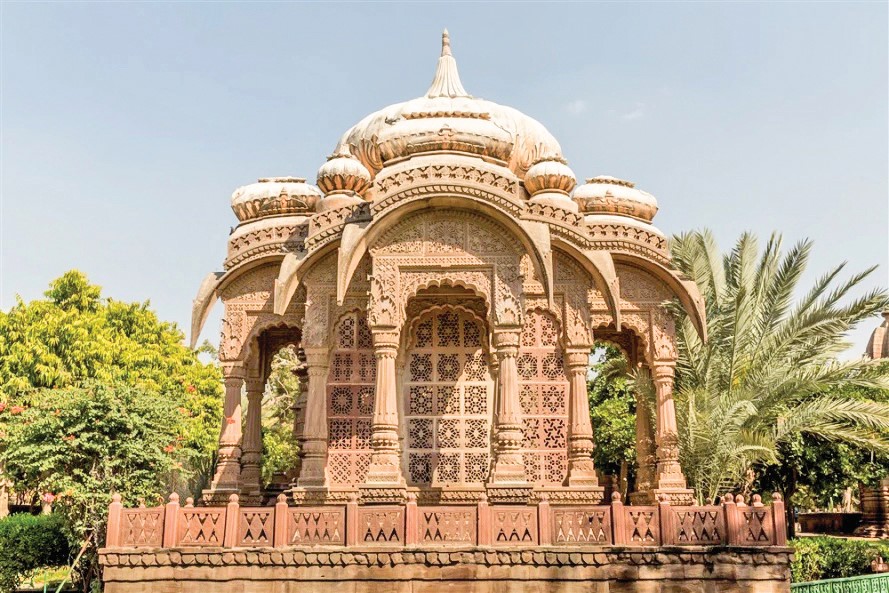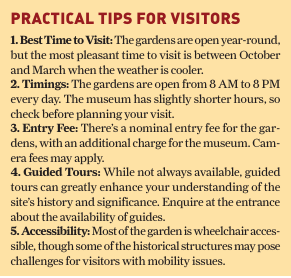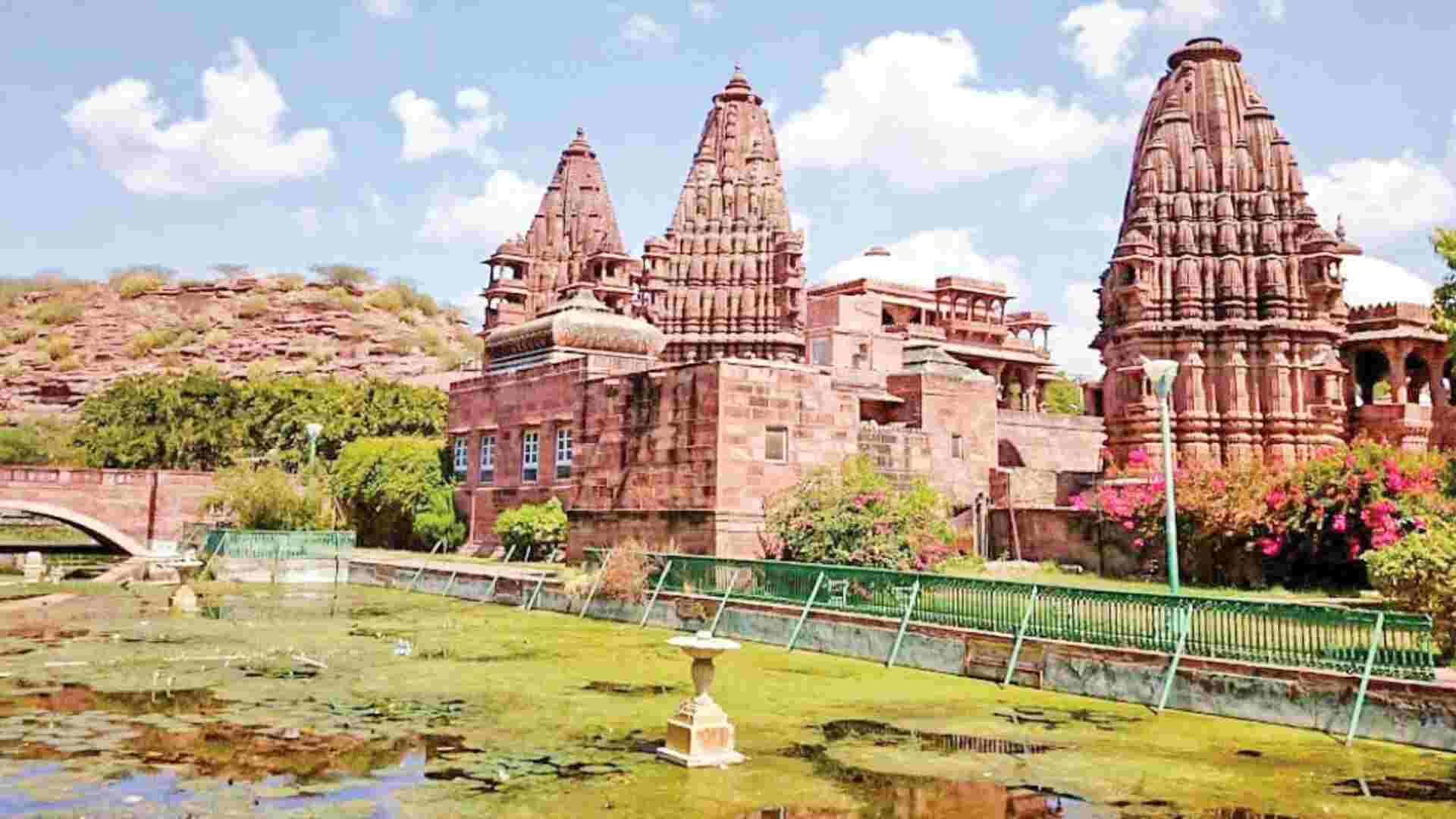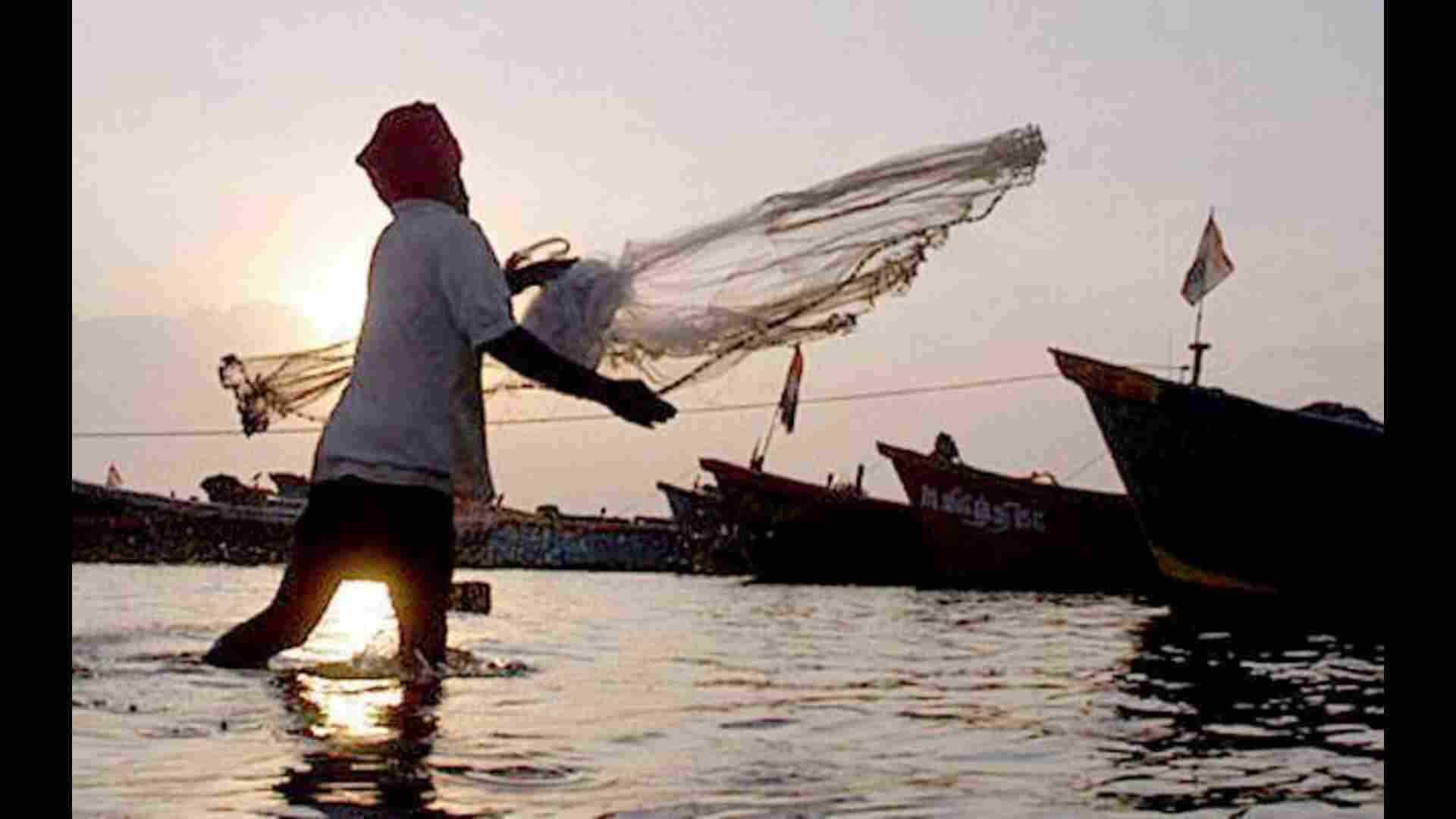Mandore Gardens, with its crumbling charm and offers a refreshing counterpoint to the grandeur of Mehrangarh Fort. This lesser-known attraction invites visitors to witness history, nature, and local culture of Rajasthan, intertwined in the most captivating ways.
A Glimpse into Mandore’s Past
Once the capital of the Marwar region, Mandore predates Jodhpur by several centuries. The city served as the seat of the Rathore dynasty until 1459 when Rao Jodha shifted the capital to the more easily defensible Jodhpur.
Today, Mandore Gardens stands as a proof to this rich history, offering visitors a chance to explore the remnants of a once-great city. The gardens, sprawling across 73 acres, are not just a feast for the eyes but also a treasure trove of architectural artwork and cultural artifacts.

Entering the Time Capsule
As you step through the gates of Mandore Gardens, you’re immediately struck by the sense of stepping back in time. The air feels different here – cooler, quieter, infused with the subtle fragrance of native flora. The first thing you’ll notice is the stark contrast between the manicured lawns and the weathered structures that dot the landscape.
The Hall of Heroes
One of the most impressive sights in Mandore Gardens is the Hall of Heroes. This long gallery houses 16 gigantic figures carved out of a single rock. These statues represent various Hindu and Rajput folk deities and heroes, each with its own story etched quite literally in stone.
What makes this gallery unique is its resemblance to a giant, three-dimensional comic book. The intricate carvings depict scenes from mythology and local legends, allowing visitors to ‘read’ the stories as they walk along. It’s not uncommon to see groups of schoolchildren gathered here, listening intently as their teachers bring these stone characters to life through animated storytelling.
Tip: Visit early in the morning when the soft light accentuates the details of the carvings, making for some truly spectacular photographs.

The Cenotaphs
Perhaps the most photographed structures in Mandore Gardens are the cenotaphs or ‘dewals’. These towering monuments, dedicated to various rulers of Jodhpur, stand out for their unique architectural style. Unlike the typical dome-shaped cenotaphs found elsewhere in Rajasthan, these structures more closely resemble Hindu temples.
The most impressive of these is the cenotaph of Maharaja Ajit Singh. Standing tall at four stories, this red sandstone marvel is adorned with intricate carvings and elegant pillars. What’s fascinating is how these structures blend different architectural styles – you can spot elements of Rajputana, Jain, and even Mughal architecture in their design.
An interesting tidbit: Look closely at the ceilings inside these cenotaphs. Many of them still bear traces of vibrant frescoes, offering a glimpse into the colorful past of these now-weathered structures.
The Government Museum
Housed in what was once the palace of Mandore, the Government Museum offers a welcome respite from the heat and a chance to dive deeper into the region’s history. The museum’s collection, while not vast, is eclectic and intriguing.
From ancient sculptures and inscriptions to medieval arms and armor, the exhibits paint a vivid picture of Marwar’s past. One of the most interesting sections is dedicated to the various tribes of the region, showcasing their traditional costumes, jewelry, and daily-use items.
Don’t miss the small but fascinating display of old photographs of Jodhpur and its royalty. These sepia-toned images offer a stark contrast to the city’s current appearance and are sure to pique your curiosity about how life in Jodhpur has evolved over the centuries.
The Gardens
While the historical structures are undoubtedly the main draw, the gardens themselves deserve special mention. In a region known for its arid landscape, Mandore Gardens offers a refreshing burst of greenery.
The gardens are laid out in the classic Mughal style, with geometrical patterns and water features. However, what makes them unique is the choice of plants. Instead of trying to maintain finicky exotic species, the caretakers have wisely opted for native flora that thrives in the desert climate.
You’ll find a variety of desert plants, including several species of cacti and succulents, alongside more common garden varieties. This thoughtful landscaping not only ensures that the gardens remain lush year-round but also provides a habitat for local birds and small animals.
Birdwatching enthusiasts, take note: The gardens are home to a variety of bird species, including peacocks, parakeets, and even the occasional eagle. Early mornings are the best time for bird spotting.

The Mandore Bawdi
One of the less-visited but most fascinating features of Mandore Gardens is the ancient stepwell or ‘bawdi’. This architectural marvel is a testament to the ingenuity of ancient Indian engineers who devised ways to store water in the desert.
The stepwell descends several stories into the ground, with intricate carvings adorning its walls. While it’s no longer filled with water, it’s not hard to imagine how it must have looked in its heyday – a cool, shaded retreat from the scorching desert sun, with the sound of water echoing off its stone walls.
Local Culture
What truly sets Mandore Gardens apart from other historical sites is how it continues to be an integral part of local life. On any given day, you’re likely to encounter more locals than tourists here.
In the early mornings, you might see yoga enthusiasts practicing their asanas on the lawns. As the day progresses, the gardens become a favored picnic spot for families. In the evenings, it’s not uncommon to stumble upon impromptu music sessions, with local musicians gathering to play traditional Rajasthani tunes. During festivals, especially Navaratri, the gardens come alive with color and music. Local artisans set up stalls selling handicrafts, and the air is filled with the aroma of street food. It’s during these times that you truly get to experience the vibrant culture of Jodhpur.
The Monkey Business
No article about Mandore Gardens would be complete without mentioning its most notorious inhabitants – the monkeys. Large troops of langurs call the gardens home, and they’re not shy about making their presence known.
While they add a touch of wilderness to the setting and can be amusing to watch, it’s important to remember that they’re wild animals. Keep your belongings close, and avoid carrying any food in the open. The local authorities have put measures in place to manage the monkey population, but it’s always better to err on the side of caution.







